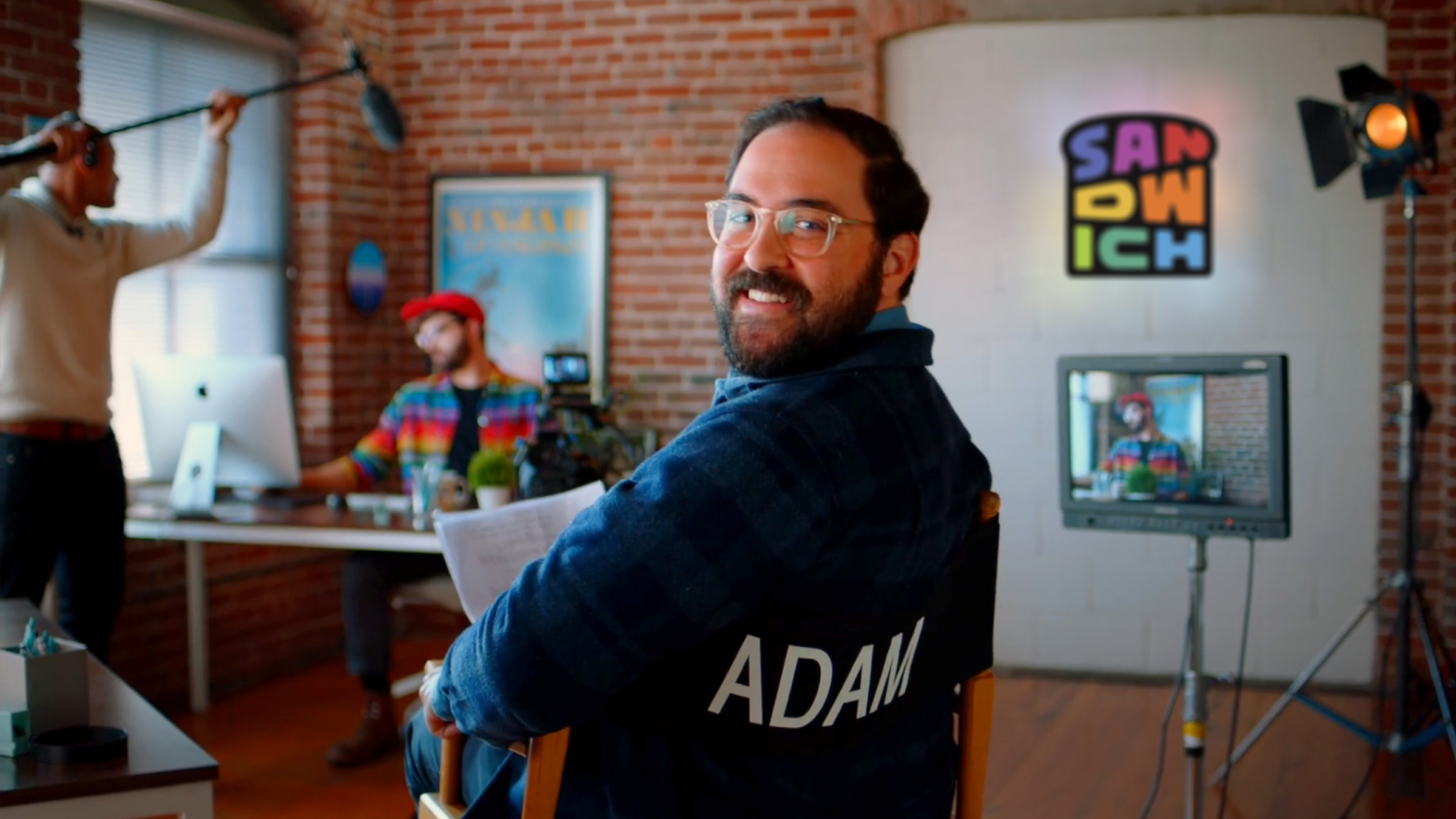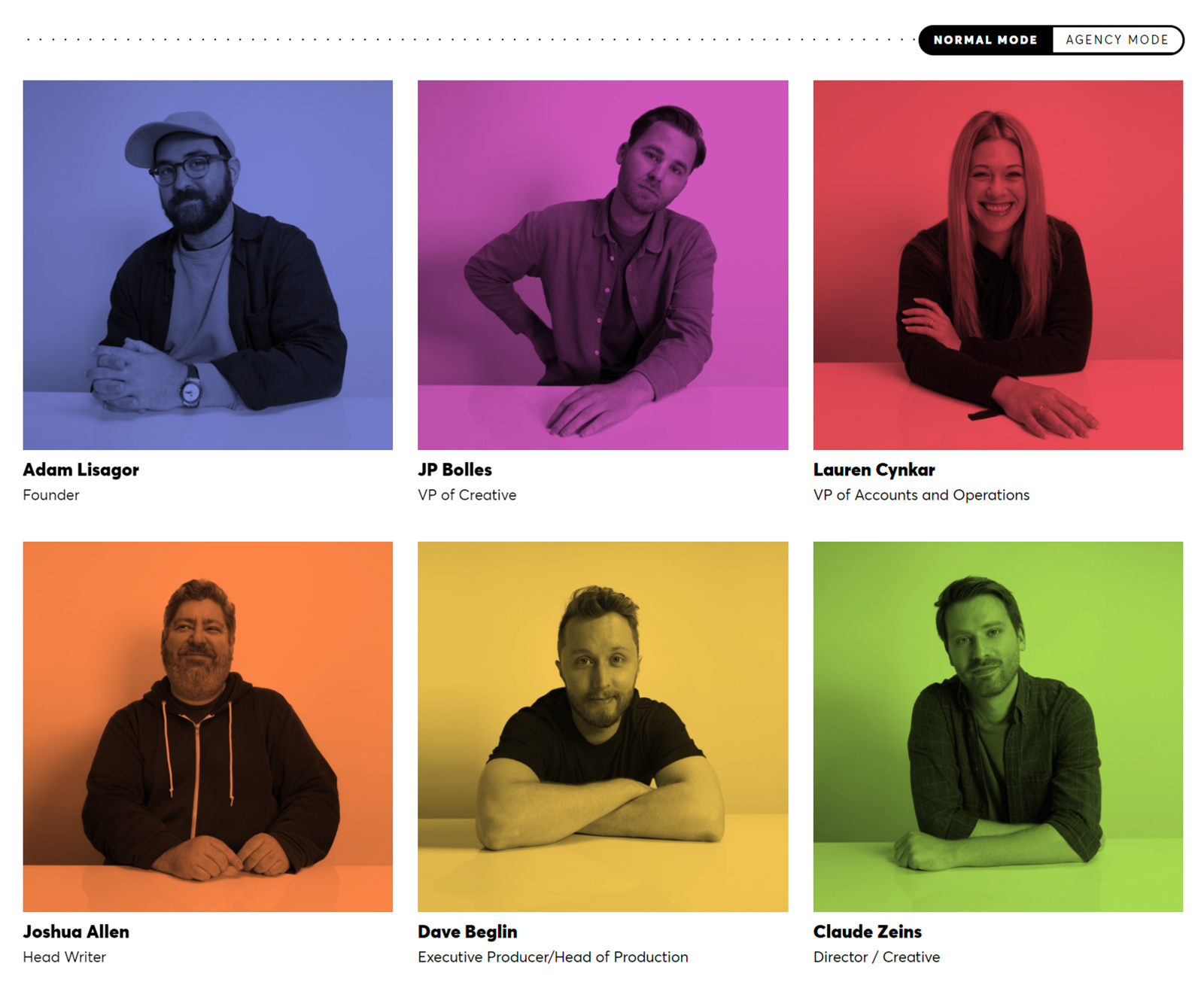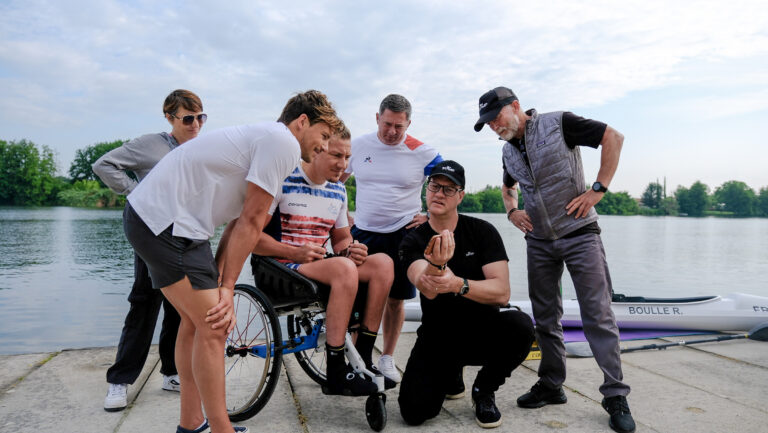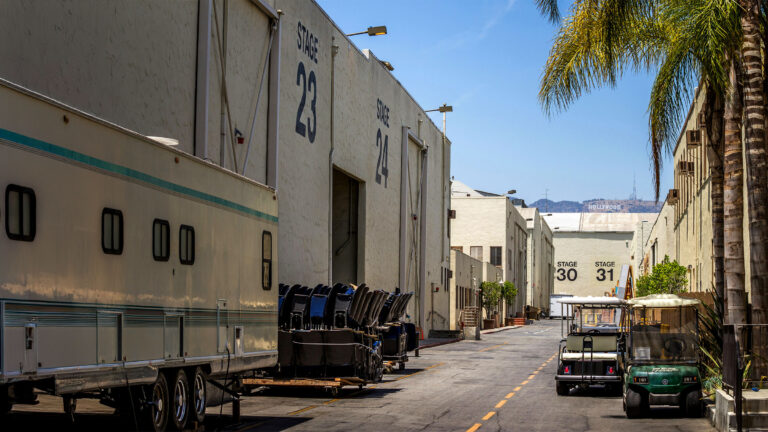Think about the perfect sandwich.
Layers of contrasting and complementary flavors and textures combined to surprise, delight, and nourish you all at once, in an easy-to-consume package.
It’s that same recipe that makes LA-based Sandwich so successful. The brainchild of founder and creative director Adam Lisagor, Sandwich is the much sought-after creative agency best known for their unconventional approach to commercials and explainers.
By pairing ingredients like familiar situations with a generous helping of humor, they take the complex stories from tech clients like Slack and Descript to brands like Purple and Lyft and transform them into digestible bites.
In this installment of Made in Frame, we delve into their script-to-screen process to learn about how they create one satisfying video after another.
A full-meal deal
Sandwich’s reel is overstuffed with a who’s who of top-shelf brands including Starbucks, Rothy’s, Rakutan, Groupon, TrueCar, Warby Parker, and so many more.
According to post producer Janelle Domek, at any given time Sandwich juggles somewhere in the neighborhood of 20 projects in various stages of production.
Functioning as agency, production company, and post-production studio, they handle literally everything from concept to delivery. It’s why they appreciate using tools that give them a frictionless end-to-end workflow that gets them to the creative work faster.

Adam, who started in the business at a time when film was still the dominant method of capture at the higher end of production, remembers what it was like to be a PA hustling cans of original camera negative to a lab for processing.

Later, as an on-set editor, he recalls, “We had a BNC connector coming out of the video tap on the film camera. Then I had an A/D converter that went into my laptop. The image looked really gross, but back in 2005, 2006 it was dazzling that you could do that in Premiere or Final Cut. And then I remember that you could shoot something and maybe get a DVD of dailies back the next day. But it was barbaric compared to what you can do today.”
It’s why Adam immediately saw the value of the Frame.io Camera to Cloud (C2C) workflow.
They recently used it on their production for cybersecurity client ExtraHop, and let us observe as they tried it out for the first time with two different units shooting simultaneously.
From the set, Adam says, “We’re shooting in the next room, and I go to my phone in Frame.io and there it is! It just happened instantaneously. If you told this to the teenage me, I would faint because it would blow my mind.”
Paul O’Mara, assistant editor, elaborates on another way in which the impact is immediate and tangible.
“Sandwich hires overnight editors, which is how I started out. Until now, we’d shoot all day and then I’d wait at the office for someone to deliver a drive. I’d be up at night, drinking coffee, transcoding everything and prepping the project so the editor could come in the next morning and start editing. With C2C, we won’t need an overnight editor to prep. The editor can just get started.”

Proof of concept: Tyler Hymanson was back at the Sandwich office while the ExtraHop shoot was in progress.
As the post supervisor, he’s responsible for making sure that everyone has what they need for every step of the process from offline to delivery—including VFX, where it’s especially important to ensure that the correct elements have been captured.
“I was remote, at my workstation, and right after the camera started rolling I saw clips coming in and I was able to review them, throw them into a timeline, and try some cuts with the proxies,” he says. “There were definitely some shots that I wanted to see to make sure they were keeping our VFX artists in mind as they were shooting. I could send Adam a text or give a call if I needed to adjust something. That amount of collaboration can only make any shoot better.”
An added layer of creativity
Sandwich began using Frame.io when they shifted to working remotely during the pandemic. But since then, they’ve found lots of reasons to make it an integral part of their workflow going forward.
For one thing, it helps them work more creatively. As the saying goes, comedy is hard. Setup, timing, delivery—it all has to click for it to work, and sometimes even after countless takes it’s hard to know whether it will all come together in the edit as you’ve envisioned. It’s yet another reason why Adam finds Frame.io an indispensable tool.
“In post, organization is everything,” he says.
“It can mean the difference between finding that magical take that makes the joke play. There are so many opportunities for error or for the right take to get overlooked, and when your tools help reduce the potential for error, it’s your chance to prove to yourself that you actually set up all the pieces to make it funny.”
It’s also a matter of focus. Streamlining logistics means getting to the creative part of the process faster. “The less time our team spends trying to figure out a confusing technology or trying to dig through emails is the more time we have to do the things we actually care about, like bringing the work over the finish line,” says Janelle.
“In post alone, we might have between five and ten projects running, so every day is a big day for us. We were already using Frame.io for getting dailies to the editors and VFX team, and getting clients to review work and give us feedback. But now with C2C, it’ll be great because our overnight editors will be able to start working on the stringouts right away and won’t have to be here all night. And anywhere that we can save time means we’re not stressing at the last minute over a deadline.”
The secret sauce
It also means that Sandwich can better handle the high demand for their services.
Back when Adam made his first comedic explainer it was for a creative writing app for Twitter he’d created. Because he had a background in filmmaking, he decided to make a video to go along with it. He added some VFX and gave it some “visual dazzle that brought the technology to life in a different way,” he says.
“Then I added a sense of humor. The app was fine, but the video captured the attention of the tech industry, and a lot of companies that were just starting out came to me to help them tell their stories in a similar way.”
It was 11 years ago when Adam first walked into the Square office with a camera in his backpack.
Fast forward to today. “We do a specific thing and our clients tend to know where the value lies in what we do,” he says. “We want people to pay attention to the message and making it too information-dense is the best way to get someone to tune out. So we try to make something that’s nutrient-dense and self-contained, but pleasing to the palate.”
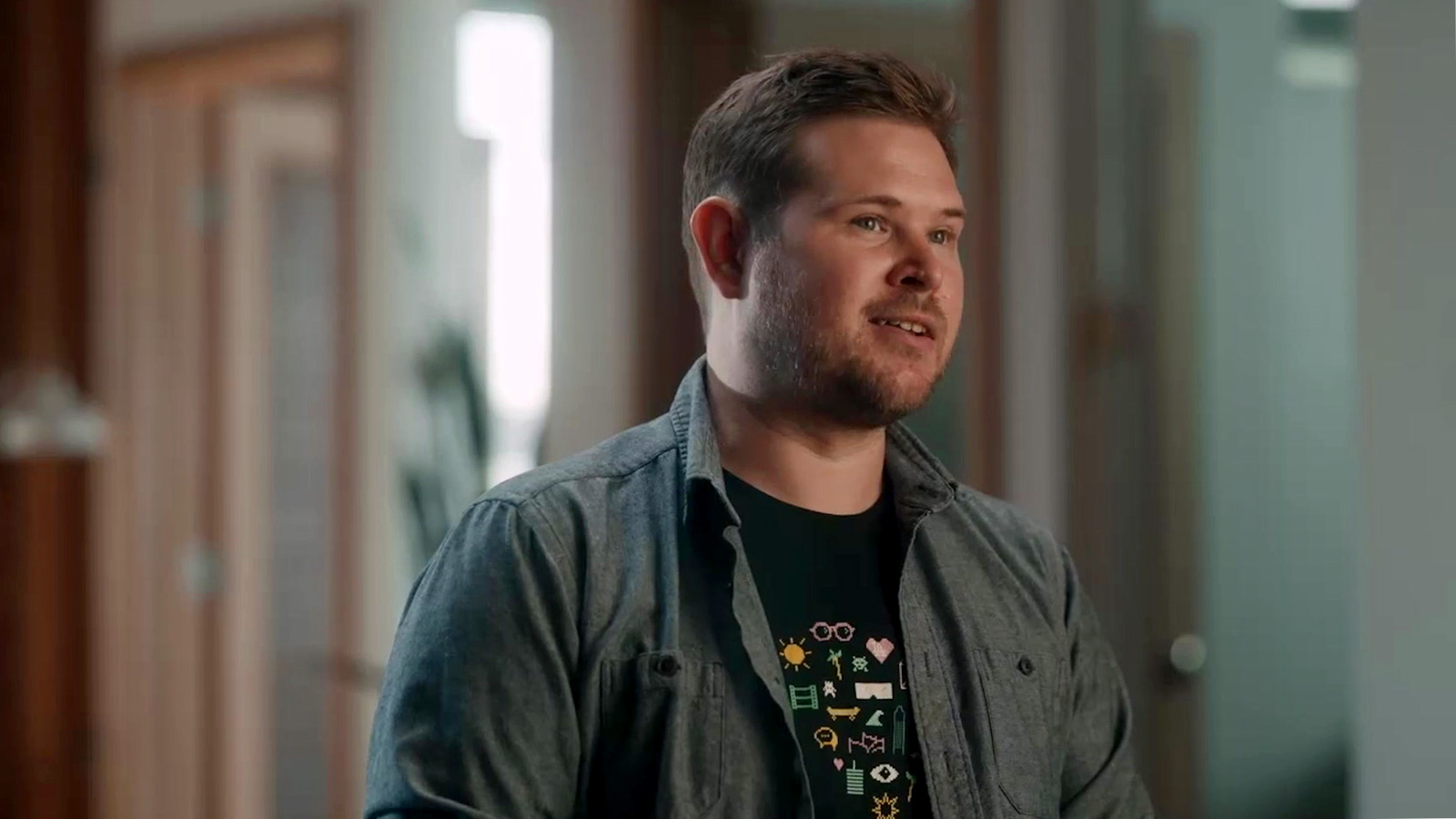
Those on Adam’s team possess the same enthusiasm for the type of work that Sandwich does. A self-described “Sandwich superfan” who knew she wanted to work there even before making the move from Chicago to LA, Janelle supports using Frame.io because, “it means we can take on more work, which is what we like to do.”
Paul agrees. “Anything we can do to speed up our process lets us be more creative and get to the exciting stuff sooner.”
“We’re involved in every part of the pipeline even in post,” Tyler says. “We want our work to stand out, so we collaborate early on to find the best way to approach a project. I think the consistency of our quality is because when ideas are going from the script all the way to when the finals are exported, the same eyes are on it with the same intention. Everybody’s on the same page and if you’re not, you can raise your hand and reconsider or reorient as a group. It’s something that I haven’t really experienced at other companies.”
Paul echoes Tyler’s assessment. “It’s like a hive mind, or a family. It’s a small team and we all wear a lot of hats, so we avoid a lot of the creative conflicts that bigger teams experience.”
A recipe for the future
So what will Sandwich’s recipe for success look like in the future?
“Frame.io makes things possible that we’ve been dreaming about for a long time,” Adam says.
“When I was first on film sets as a VFX coordinator, we took a lot of handwritten notes and drew diagrams. There were camera logs and sound logs and script supervisor notes. Why wasn’t there something that could bring all of that together and eliminate redundancy? Because the tech wasn’t there yet.”
With C2C, not only do all the video and audio clips feed directly into Frame.io, the files are rich with metadata that includes scene and take numbers and timecode that matches the slate, so it becomes easy for anyone with access to the dailies to search for a specific take based on script notes.
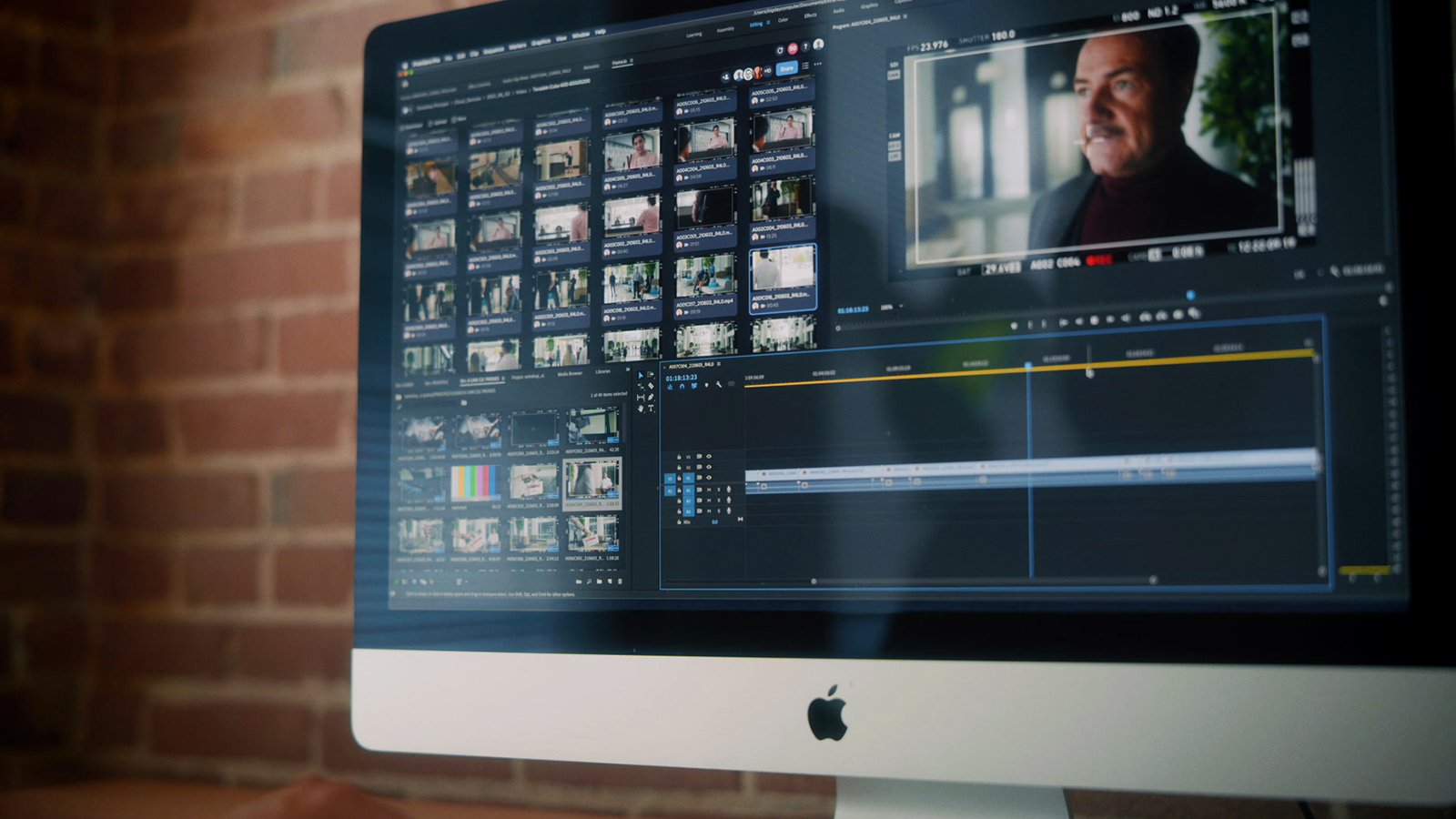
“We’re shooting two units today,” Adam says, “and I don’t have to cross my fingers to wonder whether we’ve gotten something good. The camera feed is in my phone in a matter of seconds, and I can just scrub through it so that I can feel really good about what we’re shooting.”
“I have a core belief that being expert at something is making errors and correcting them in the minimal amount of time. So with C2C, you can see what you did, point out what might be deficient about it, and correct it. You shorten those loops and you’re on the way to the ideal.”
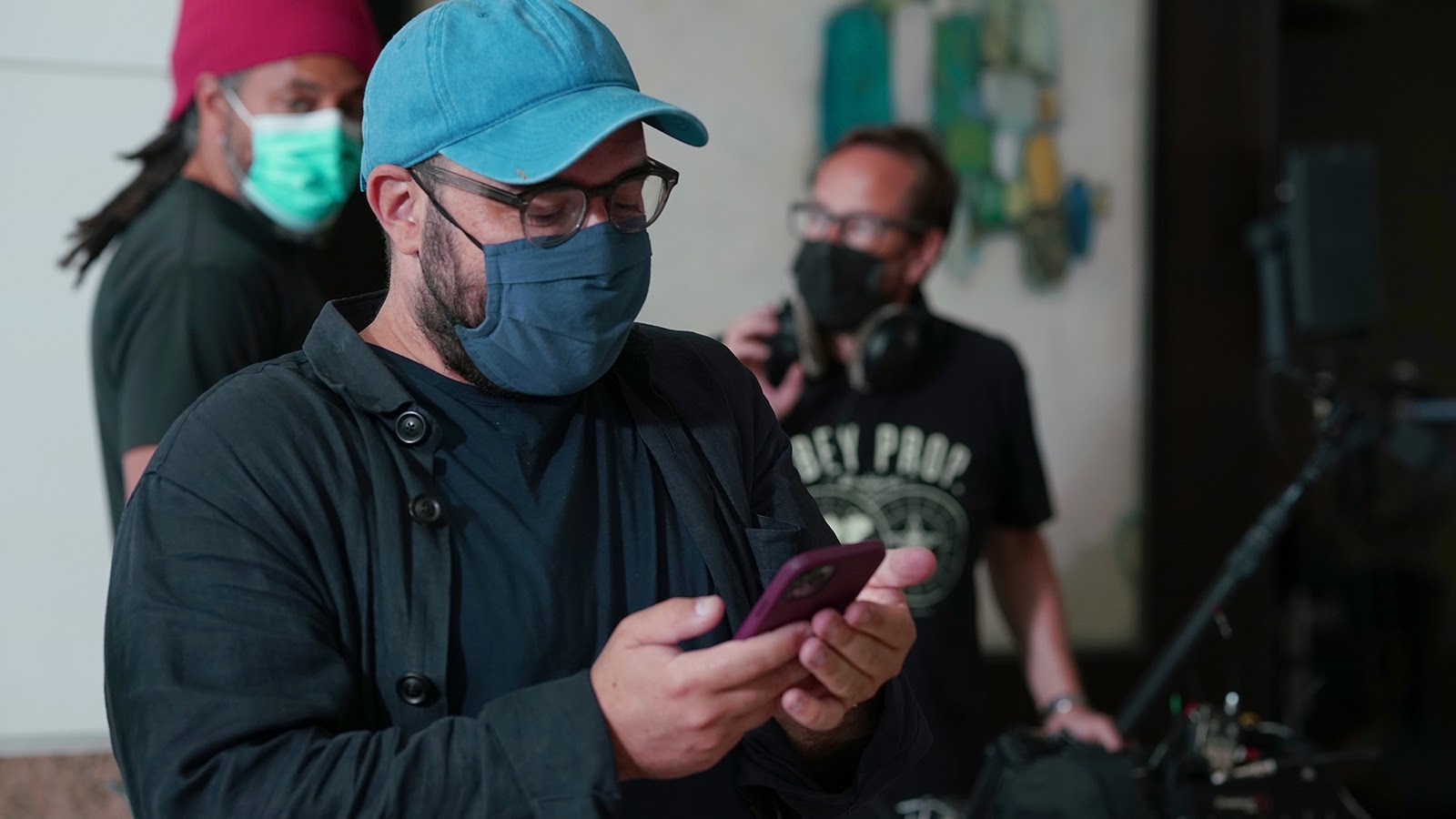
For Tyler, it’s about streamlining their entire workflow. “Frame.io gives our creatives a lot of what they like. The UI is clean and it’s easy to have reviews and know that everyone is looking at the same thing,” he says.
“But we also use it for all aspects of our projects. We use it for uploading and distributing dailies. We use it for color prep because we can see our files in the color spaces that we need to. We send assets out to our remote VFX artists and colorists and, in turn, when they’re done with their shots, they upload back up to Frame.io. I curate everything—new versions, new exports, and then final QC. And now with C2C, you can shoot anywhere and get dailies and not have to worry about shipping drives or anything else that can go wrong.”
Paul adds, “The overnight editing job has become more of an afternoon editing job. Probably three hours worth of work has been cut out of the process because we don’t need to wait for someone to bring the footage to the office and we don’t need to transcode. Anything we can do to speed up our process lets us get to the creative stuff sooner, which is what we’re about at Sandwich.”
What’s also noteworthy to Paul is that they’ve only been using Frame.io for just over a year but, “It feels like we’ve been using it for so much longer. It’s not as if we’re adding steps to our workflow—we’re refining it. Everyone who needs to has access to the project, whether it’s for sending files back and forth, or reviews.”
As the person responsible for managing the post process and the clients, Janelle is acutely aware of how vital it is to save time.
“My MO as a producer is that we have to be fast and efficient. So the thing that’s great about Frame.io is that I know exactly where everything’s going to be. I know where the cut’s uploaded. I know where to look for everything. It’s so easy.”
Having time is better for our mental health, and that’s better for the company as a whole.
But even more than ease is the peace of mind that the Frame.io platform brings to the entire crew and process.
For Adam, it’s immediately knowing that he’s got his shot and that the joke will work. For Janelle, it’s knowing what to expect from the shoot in post and where to find all feedback on a project. For Tyler and Paul, it’s knowing that every asset, no matter the format or quality, is available for every creative to access.
And for all of them, it’s knowing that having everything consolidated in place means they can stay organized and work faster and more efficiently.
“Frame.io helps us save time, and I want to say time is money but I won’t,” Janelle says. “Because really having time is better for our mental health, and that’s better for the company as a whole.”
And here at Frame.io, we’re just happy to help make a better Sandwich.
Featured image © Wistia

